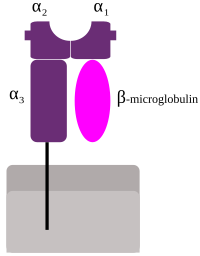
Photo from wikipedia
Abstract Structural defects on the surface of GaAs, which affect inevitably the optical and electrical properties of GaAs-based devices, are usually caused by machining, polishing, and cleaning processes. Investigating the… Click to show full abstract
Abstract Structural defects on the surface of GaAs, which affect inevitably the optical and electrical properties of GaAs-based devices, are usually caused by machining, polishing, and cleaning processes. Investigating the generation and evolution of these defects is of significance for optimizing manufacturing process and hence improving device performance. In this paper, current signals on processed GaAs surface were investigated using a conductive atomic force microscope (CAFM) for evaluating the surface changes including defect generating. Higher current was detected at the edge of scratches without etching, which increased with the applied normal load in scratching. During selective etching, increasing current signals were detected from the scratch as the etching progressed. Long-time etching can also result in local current breakover of unscratched GaAs surface. In-situ high-resolution transmission electron microscope (HRTEM) and X-ray photoelectron spectroscopy (XPS) were employed for revealing the etching-dependent current evolution mechanism. The lattice defects of scratched area are responsible for abrupt change of the current, and the insertion of conductive ions are expected to make the current increase during the selective etching. Further analysis shows that the increased current signals at the edges of the scratch or hillock on GaAs surface can be ascribed to the modified Schottky barrier height. Since prolonged etching may result in leakage current on the scratched area, light normal load in scratching and less time for selective etching are recommended for GaAs processing.
Journal Title: Materials Science in Semiconductor Processing
Year Published: 2020
Link to full text (if available)
Share on Social Media: Sign Up to like & get
recommendations!